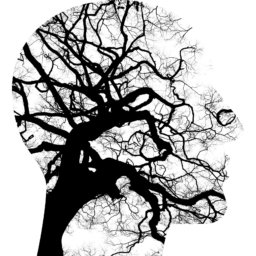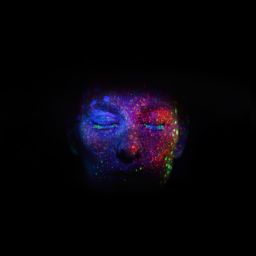In individuals, insanity is rare; but in groups, parties, nations and epochs, it is the rule.
– Friedrich Nietzsche
Personality Disorders (PDs) are defined by the DSM-V as significant impairments in the self and interpersonal functioning across time, which cannot be explained by socio-cultural environment or substance abuse (American Psychiatric Association 2012). These disorders are unique within psychiatry because, unlike many of the Axis I disorders, they did not begin to take form until the 19th century. They also tend to create controversy around their definitions, as they are molded by the behavioural standards within a society, and are therefore quite subjective. This subjectivity may be the reason why personality disorders have the lowest levels of reliability and validity among all psychiatric disorders (Alarcon et al. 1995).
There is an important difference between personality styles and disorders, and clinicians must be able to make this distinction. As society changes, roles and values are transformed, leading to the creation of new disorders. One example of this is internet gaming disorder.
Perhaps we should start by clarifying our terms: what is personality? Is it something that is inherent and unchangeable? Or is it a malleable entity, a wisp of smoke that can never be grasped; a question to hang above the philosophers’ heads? In 1995, Alarcon et al. suggest that personality implies a way of reacting to stimuli, coping with stress and acting on one’s beliefs about oneself and the world. It has been suggested that a personality disorder is almost a caricature of the normal personality, and that it can reflect the distorted aspects of a person’s time and culture.
Society plays a very powerful role when it comes to psychological disorders. It has been suggested that prejudice can distort societies’ perceptions towards those from disadvantaged backgrounds and inflate the rates of personality disorders in these groups. For example, it has been suggested that almost half of inner city youth who have been diagnosed with antisocial personality disorder have been misdiagnosed, because their behaviors are occurring in a unique cultural context; a context which includes the prevalence of behavioral systems which value violent behavior as an acceptable survival strategy (Alarcon et al. 1995). Furthermore, antisocial behaviour could be seen as an adaptation to the excessive demands of our modern world. With the increasing expectations placed upon our youth, not only for wealth and success, but also for a ‘happy’ life with a spouse and child, a fast car and a big house, is it any wonder that many kids rebel against such idealistic expectations? Perhaps it is society that is towing the soil, encouraging the growth of such ‘pathological behaviour’ in our culture. Are we simply pushing humanity too far?
Borderline Personality Disorder (BPD) is another example of a personality disorder that has become increasingly common in the modern world (Grant et al. 2008). Those who have ever set foot on a psychiatric ward will be familiar with the label, as it is the most prevalent category of personality disorder within the mental health services (National Collaborating Centre for Mental Health, 2009).
BPD is a relatively new diagnostic entity, first described in the 20th century. Although people committed suicide in the past, self-harm in the form of wrist cutting is relatively new, only appearing on psychiatry’s radar since the 1960s (Favazza, A.R. 2011). As societies evolve, symptom banks change, and in today’s world there appears to be an increasing acceptance of self-harm as a signal of distress– a phenomenon termed ‘social contagion’ (Jarvi, et al. 2013). Traits underlying BPD are impulsivity and affective instability. In today’s world, these impulsive symptoms are one of the most common forms of expressing distress among the young. Indeed, it has been suggested that BPD risk factors are associated with modern life (Paris and Lis 2013).
Do we as a society place such high expectations on those around us that we must fall back upon psychological labels to explain away those who do not fit into our idea of perfection? I suggest that perhaps this sudden surge in personality disorders does not merely reflect our increasing awareness of such pathologies, but also a deeper issue within modern society. Perhaps we have become so obsessed with success, with money, with beauty, that we have forgotten what it means to be human. To love, to feel, to belong.
And if this is true, then the answer lies not within the leaves of a doctor’s prescription pad, nor within the four walls of a hospital ward, but in the society that we have created for ourselves. Perhaps this rise in personality disorders, this explosion of emotional distress, is a signal that the world we have created for ourselves may be doing more harm than good. The increasing emphasis on achievements, success, wealth, and fame may indeed be turning into a poison. And if this is the case, then the antidote lies beyond the physicians’ hands; it is a task that is placed on all of us, to encourage our children to create a world for themselves that is filled with love and belonging, rather than goals and desires. It is only through an increasing emphasis upon our own humanity that we can begin to combat this psychological plague.
personality disorder, bpd, eupd, medicine, psychology, psychiatry, stigma, prejudice

- Alarcon, R., Foulks, E.F. 1995. Personality Disorders and Culture: Contemporary Clinical Views (Part A). Cultural Diversity and Mental Health. 1:3-17
- American Psychiatric Association. 2012. DSM-IV and DSM-5 Criteria for the Personality Disorders.
- Chavira, D.A. et al. 2003. Ethnicity and four personality disorders. Comprehensive Psychiatry. 44:483-491
- Favazza, A.R. 2011. Bodies under Siege: Self-mutilation, Nonsuicidal Self-injury, and Body Modification in Culture and Psychiatry. 3rd Ed. JHU Press.
- Grant, B. Stinson, F.S., Saha, T.D., Smith, S.M., Dawson, D.A., Pulay, A.J., Pickering, R.P., Ruan, W.J. 2008. Prevalence, correlates, disability, and comorbidity of DSM-IV borderline personality disorder: results from the Wave 2 National Epidemiological Survey on Alcohol and Related Conditions. Journal of Clinical Psychiatry. 69:522-545
- Jarvi, S., Jackson, B., Swenson, L., Crawford, H. 2013. The impact of social contagion on non-suicidal self-injury: a review of the literature. Archives of Suicidal Research. 17:1-19
- National Collaborating Centre for Mental Health. 2009. Borderline Personality Disorder, The NICE Guideline on Treatment and Management. The British Psychological Society, The Royal College of Psychiatrists.
- Paris, J., Lis, E. Can sociocultural and historical mechanisms influence the development of borderline personality disorder? 2013. Transcultural Psychiatry. 50:140-151















Generally I do not read post on blogs, but I would like to say that this write-up very forced me to try and do so! Your writing style has been surprised me. Thanks, very nice post.
It’s really a great and useful piece of info. I am satisfied that you simply shared this helpful info with us. Please keep us informed like this. Thank you for sharing.
Hey! I could have sworn I’ve been to this site before but after browsing through some of the post I realized it’s new to me. Nonetheless, I’m definitely happy I found it and I’ll be book-marking and checking back often!